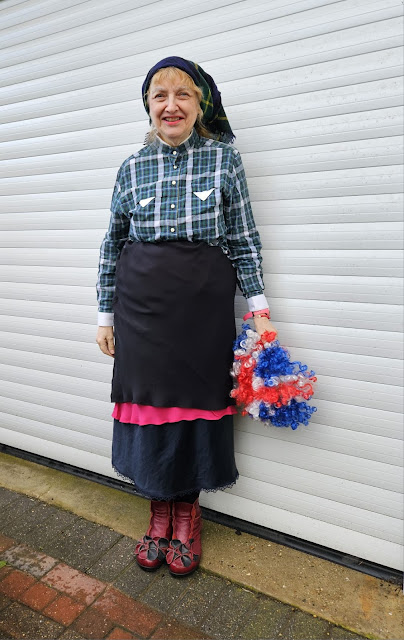How To Choose a tartan - for clans, tourists, religions, US states, outfit 325
When I was a student I wore a a black watch tartan tunic. The dark colours, black, dark green and dark blue, co-ordinated with black accessories such as shoes. Dark colours looked good with my hair which was then a dark mousy brown.
When I went to Scotland several times as a tourist from England. The shops in Edinburgh and all over Scotland sold tartans in all colours. As a tourist I simply went for the colour I liked. Unfortunately complete outfits were beyond my budget.
I knew that an army brigade wore black watch tartan in the old days. I was dimly aware that on ceremonial occasions different groups of the military, guards, and civilians would march in identifying colours.
I wore tartan because I liked the pattern. In Scotland I was offered tartans as a tourist. Now I wear a lot of red. As a child I wore blue to match my eyes. My school uniform was dark green. I liked red to get attention, especially as I am being photographed, travel and am short of sleep and need red to make me feel and look lively and awake.
In England during the Olympics, the helpers were badges of different flags indicating which languages they spoke. Since they often wore two or more badges, it did not necessarily imply that they were natives, simply that they spoke the language.
Similarly, at football matches, people who carry or wear the colours are not necessarily members of the football team, but are football supporters.
However, in the last decade I have read about Scottish people complaining that tartans are a uniform, and tourists should not wear tartans of a clan if their ancestors are from another clan, or they are not Sottish in any way.
Only later did I become aware that people with Scottish names identified with different clans and wore specific tartans. The new movement of protests inspired many individuals and groups to protest about different issues, confident that the media would take up their stories.
If you are of Scottish ancestry and wish to wear the tartan of your ancestors, your married name indicates a clan, or you have roots in a specific area, how do you find out which is your tartan?
Their is a tartan organization which has a website showing tartans and Wikipedia has a list with pictures.
There are also tartans not aligned with clans. There is a general tartan, just for tourism. Also organizations can design a new tartan, consulting the tartan authority board and paying them to register it, and paying for it to be designed in suitable colours, a bit like making a new flag.
If you are aware that a particular tartan represents a specific clan, and you want to wear tartan without causing confusion, or offending anybody, what can you do? To avoid the risk of cultural appropriation, of to take the opportunity to start conversations about what interests you and what you might have in common with others, you can choose a tartan related to a religion or even a US state.
Tartans are available for (alphabetically)
Buddhists
Clergy (Christian)
Jews
Muslims
US States.
Useful websites
https://en.wikipedia.org/wiki/Tartan
Clothes to buy
Please share links to your favourite posts.



Comments
Post a Comment